A modern and safe shop opened 110 years ago at 39 Andrássy Avenue: the Paris Department Store. Owned by the Goldberger family, the building's design followed the pattern of Parisian stores and had almost everything on offer. The new building was built with spacious interiors, wide staircases, a total of five lifts. Other equipment was also modern. For example, separate generators were installed to provide power during power cuts and modern fire protection systems were added with their own water pump.
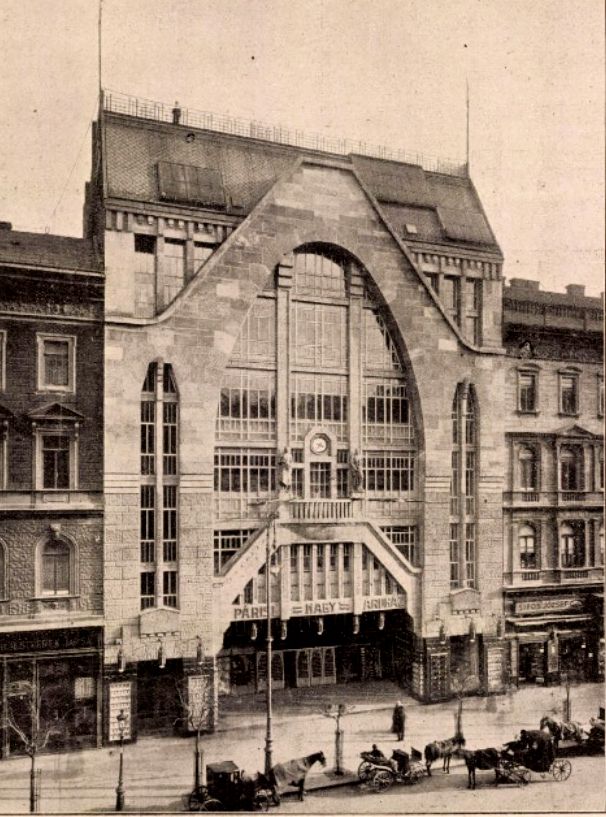
The main facade of the Paris Department Store at 39 Andrássy Avenue, 1912 (Source: Épitő Ipar, 25 August 1912)
The store's design was luxurious: the decorative elements were of Zsolnay porcelain, the glass windows created by Miksa Róth, the staircase gilded. The restaurant on the roof terrace and the skating rink shone with elegance. Nevertheless, the business policy was different. The company aimed for low prices and high sales. The store offered goods and packages for 96 Fillérs (a Fillér was one-hundredth of a Korona or later Forint) in each department. A scarf, gloves, 6 glasses or a certain length of rope, a kg of egg barley (tarhonya) or 25 dkg of butter cost 96 Fillérs.
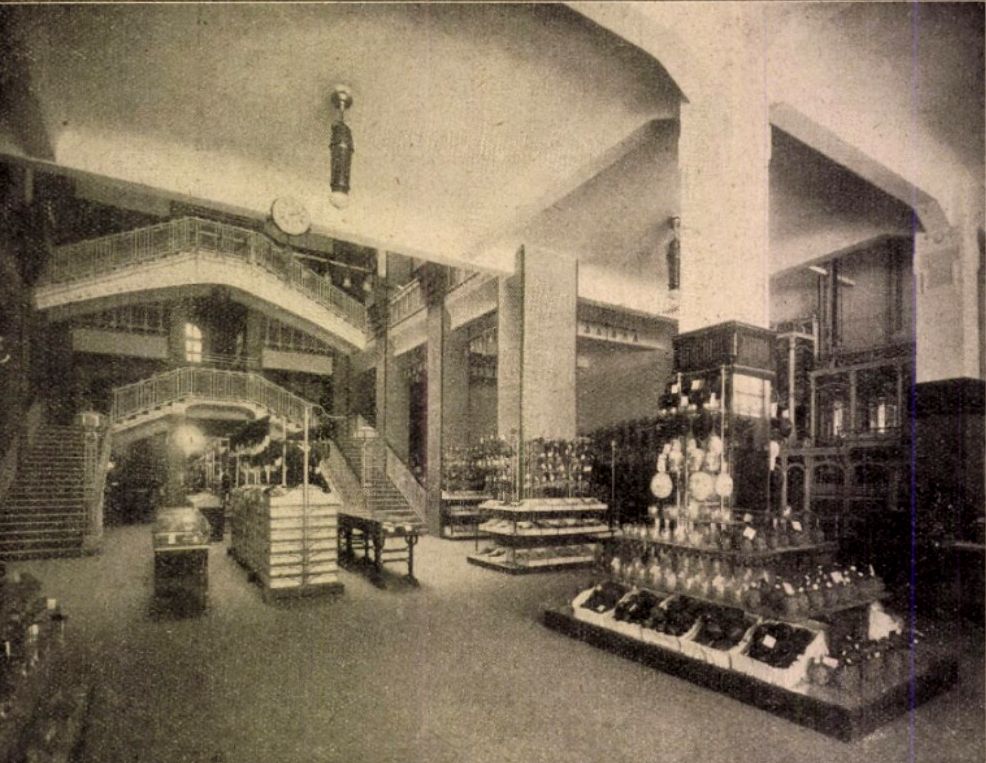
Interior of the Paris Department Store (Source: Épitő Ipar, 1 September 1912)
Zsigmond Sziklai designed the new Paris Department Store, and the Art Nouveau building became the largest and most modern department store in Budapest at the time. Its doors were opened to the general public on 3 March 1911, and Budapesti Hírlap reported on 4 March 1911 as follows:
“Today, one of the greatest attractions of Andrássy Avenue, the Paris Department Store, opened. The palace was built on the site of the former Terézváros Casino, using parts of the old building. The interior of the four-storey building is imposing. The floors are laid out with purpose and every inch well used to showcase beautiful things. No other shop in Budapest has such an offering. The simple fact that the entire palace houses a single shop is something unique, and somewhat uncommon even in the largest cities."
However, neither the store nor the building had a simple history. The Paris Department Store had existed before, only elsewhere, at 38 Rákóczi Road. The shop's building burnt down on 24 August 1903. The huge fire not only destroyed the shop and stock but spread through the building. Residents had to jump out of windows onto a jumping sheet held by firefighters. Sadly twelve people died. Although the store reopened in a smaller area not much later, the owners began looking for a new location.
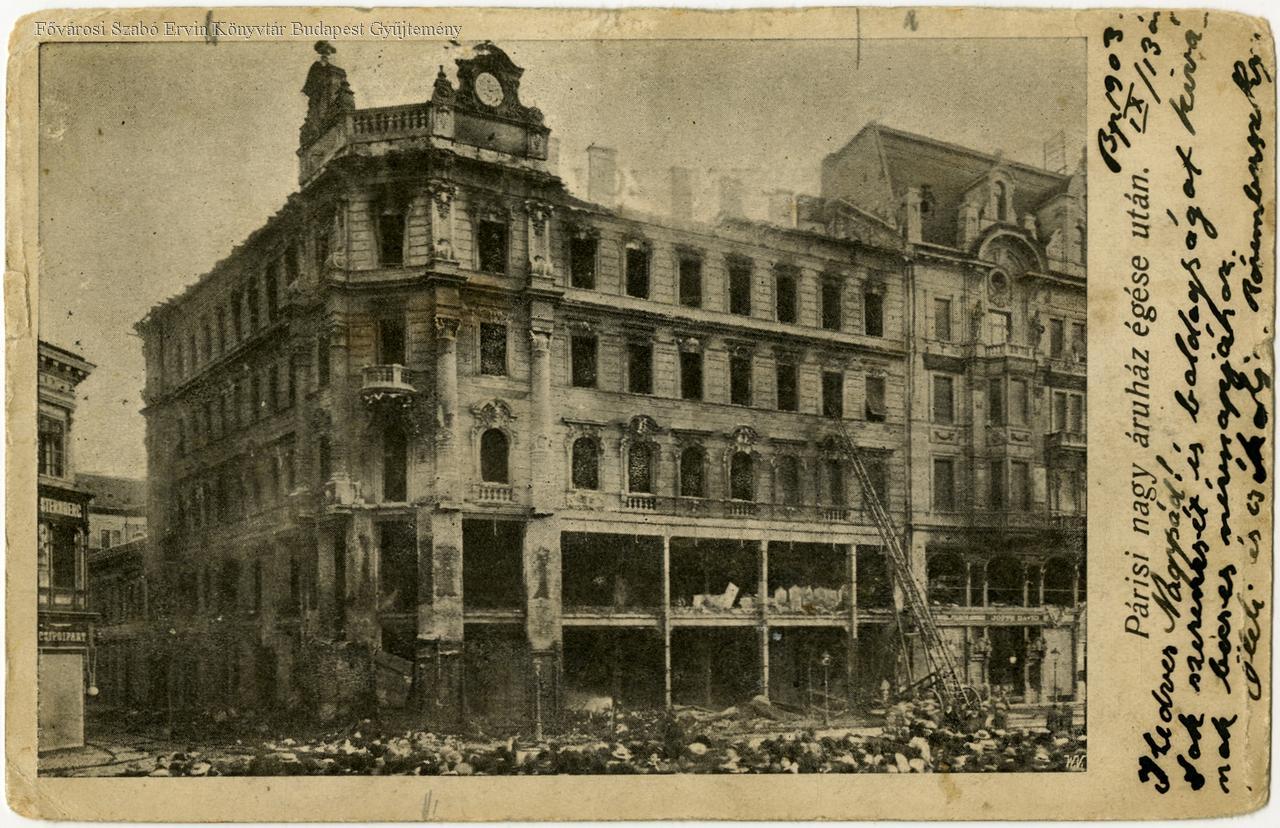
The former site of the Paris Department Store, the building at 38 Rákóczi Road, which burned down in 1903 (Photo: FSZEK Budapest Collection)
They chose the Terézváros Casino building at 39 Andrássy Avenue. The original plan was to renovate the building. In 1909 the contractors found that the original building was so poorly designed that it needed to be rebuilt significantly. The foundations were not adequate, and the materials used were of poor quality. Therefore, instead of renovation, they decided to demolish and build a new structure completely. During the palace's construction, lessons were learned from the previous fire: the building was made of reinforced concrete, and the fire safety regulations followed closely.
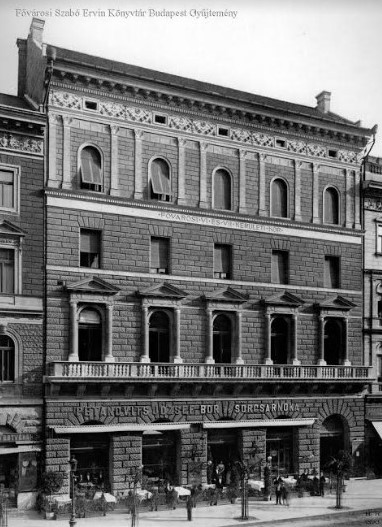
The facade of the former Terézváros Casino on Andrássy Avenue, 1890 (Photo: FSZEK Budapest Collection)
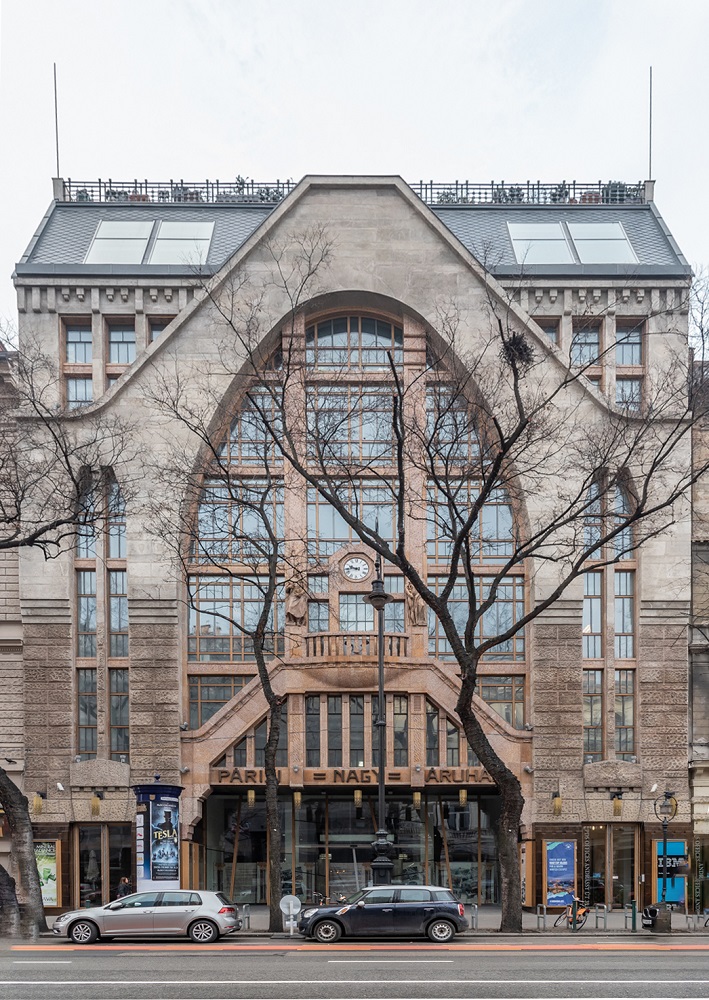
The Art Nouveau-style facade of the Paris Department Store in 2019 (Photo: Balázs Both/pestbuda.hu)
On 28 February 1911, Friss Ujság reported:
“Opening of the Paris Department Store. As the request of the owner S. G. Goldberger, the Prefecture of the 6th District completed a fire safety inspection in the Paris Department Store to ensure that the store, which is now ready to open, meets fire and public safety requirements. Foreman Sándor Eszláry, chief engineer Lajos Szilágyi, fire chief Szaniszló Szerbovszky, police captain L. Imrey, Police Clerk Imre Kisleleky, and engineer M. Scheffer visited the building. After the two-and-a-half-hour inspection, the committee was satisfied that all firefighting and fire safety equipment met the most stringent requirements; so much so that the building is protected from internal fires and those in neighbouring houses."
However, the Terézváros Casino was not completely demolished. A rear wing survived, including the Lotz Hall, painted by Károly Lotz in 1885.
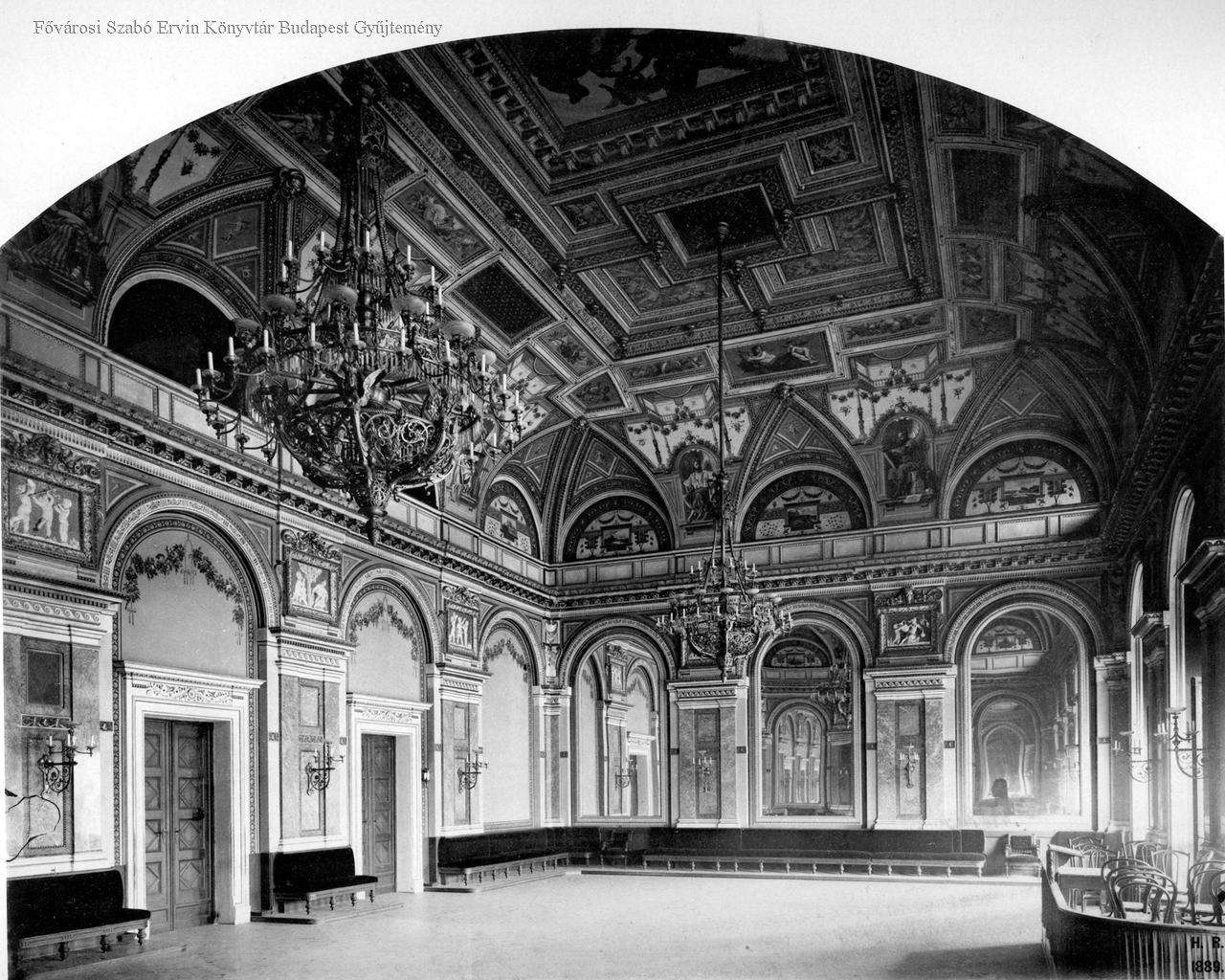
The Lotz Hall at the beginning of the century (Photo: FSZEK Budapest Collection)
However, Miklós Vértessy's article in the April 1981 issue of Budapest magazine adds some darker details to the story:
“The company’s revenue has been significantly boosted by the exploration of employees. Upon beginning work, they were forced to sign disclaimers that they could be fired at any time and could not claim a period of notice. Security guards also ensured that the weaker or skinnier sellers did not rest or complain.”
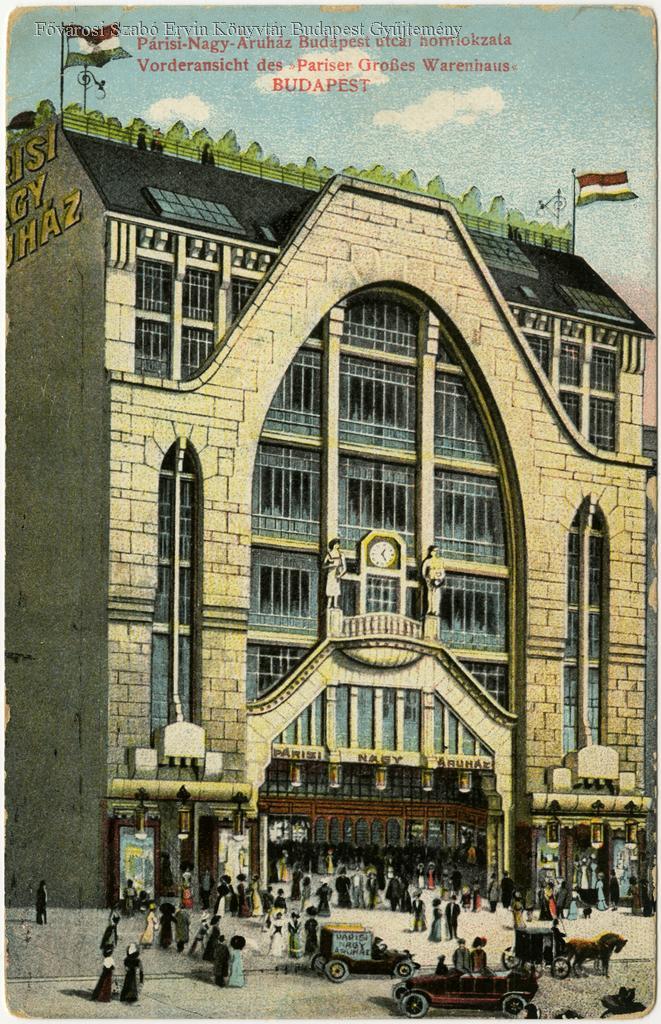
Facade of the Paris Department Store towards Budapest Street in the 1910s (Source: FSZEK Budapest Collection)
True, the above description refers to a time when business was bad. By the 1920s, the company was almost bankrupt and survived only through a change in business policy. The Goldberger family turned the store into a joint-stock company, the department’s departments were leased separately, only advertising and opening hours were shared. That is, it was a bit like current shopping centres, many shops operated in one place.
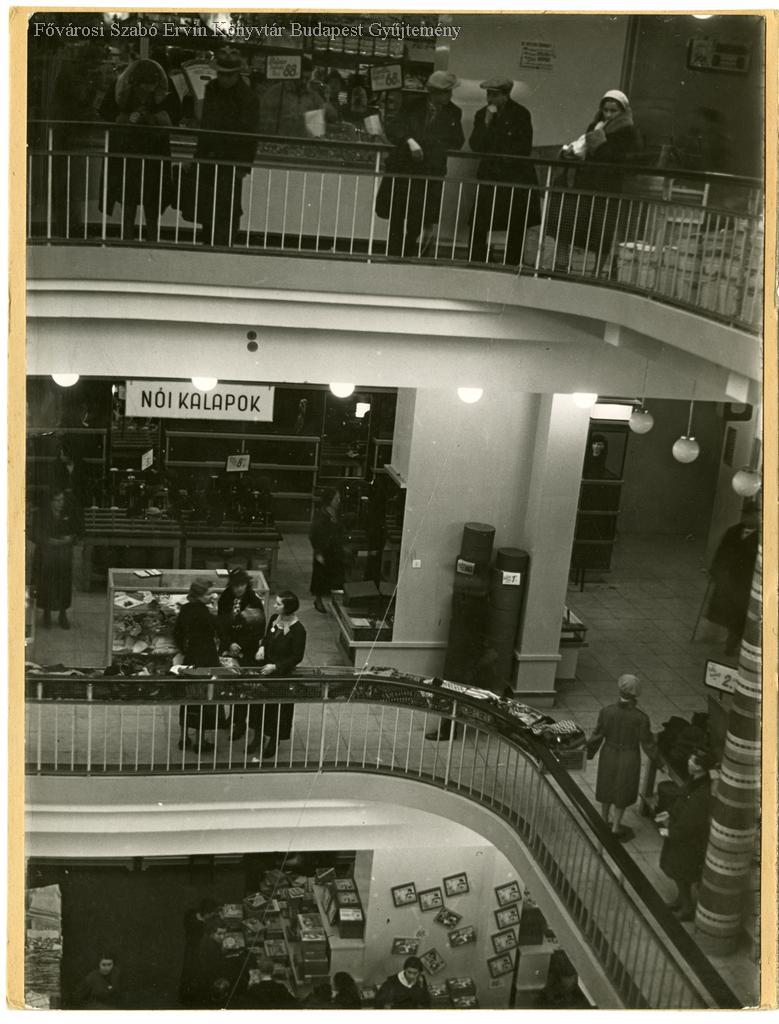
Departments of the Paris Department Store in the 1930s (Photo: FSZEK Budapest Collection)
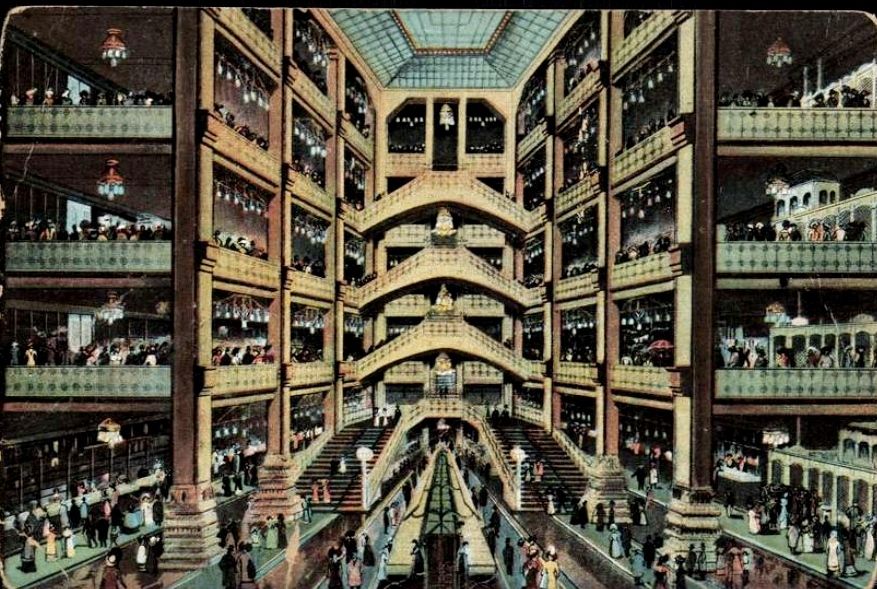
Interior of the Paris Department Store in 1934 (Source: contemporary postcard)
Although the business was economically successful, the stock's quality declined, and customers were less well-off.
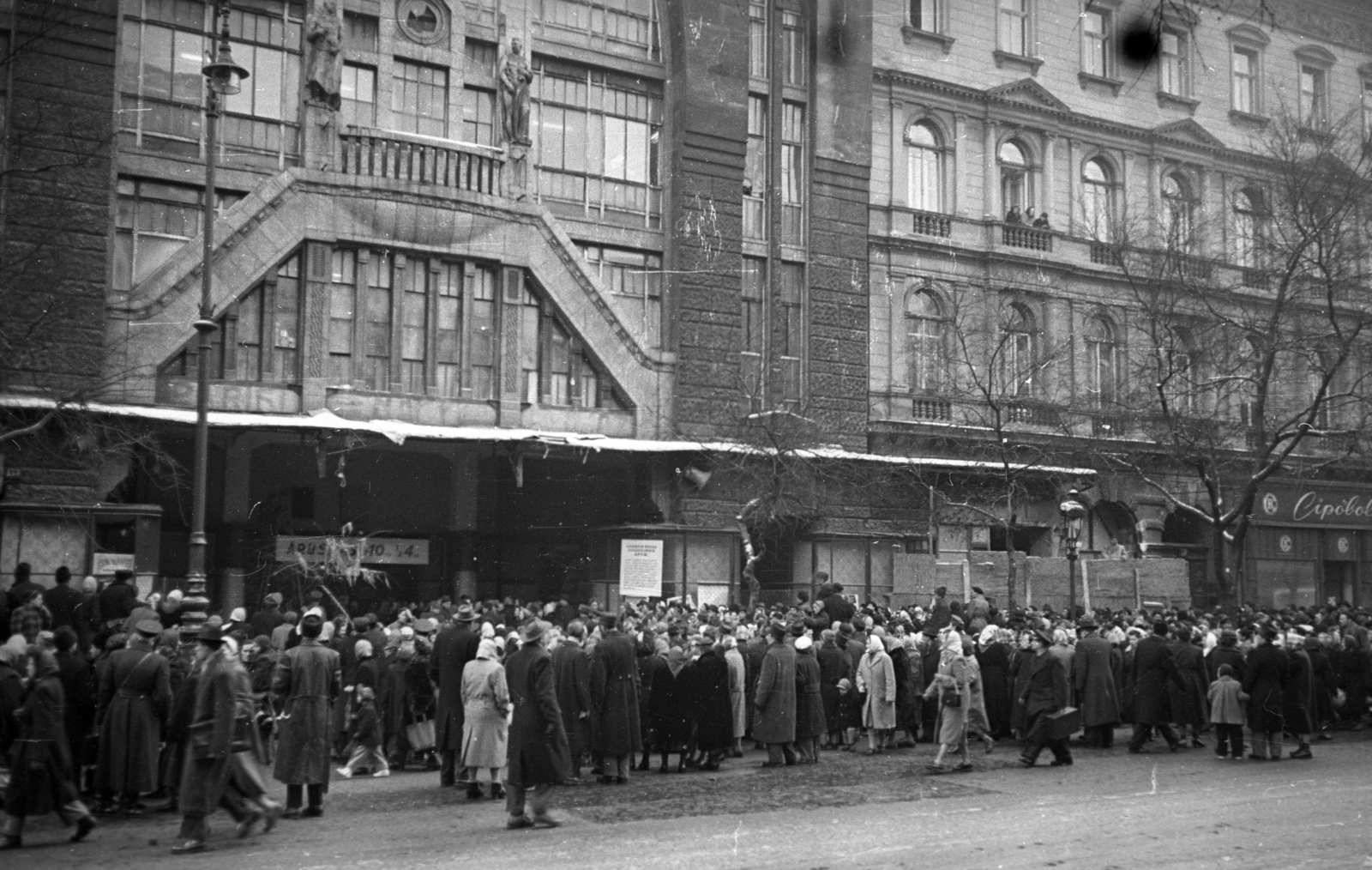
Opening of the Fashion Hall in 1957 (Photo: Fortepan/No.: 199632)
Things changed after the war. The building was a book warehouse until 1957 and then reopened as a state department store called the Fashion Hall. But that's another story.
Cover photo: The Paris Department Store in 2019 (Photo: Balázs Both/pestbuda.hu)

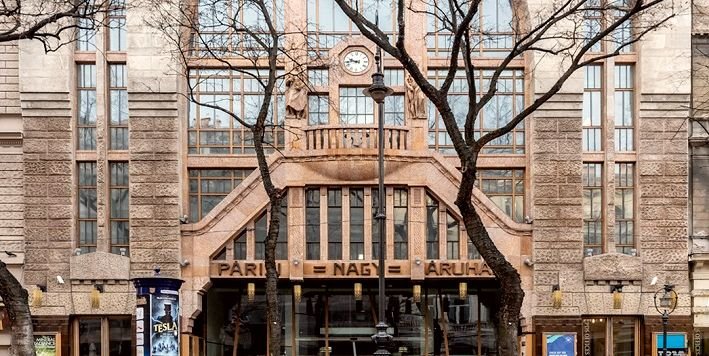


































Hozzászólások
Log in or register to comment!
Login Registration